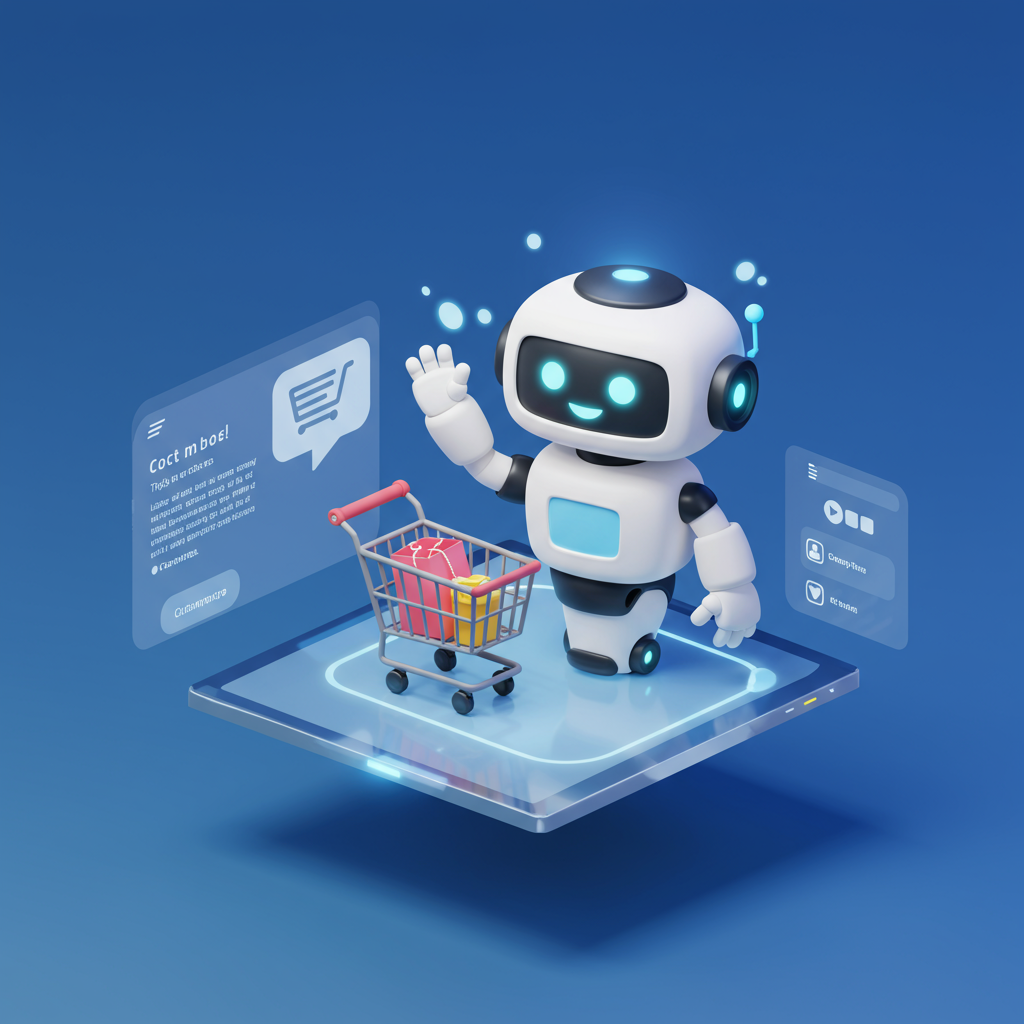Discover how integrating AI-powered chatbots can transform your Shopify store’s customer service, boost efficiency, and enhance customer satisfaction.
As a Shopify merchant, I know the daily grind of running an online store. We pour our hearts into products, marketing, and sales, but one area often becomes a bottleneck: customer service. It’s crucial, yet incredibly time-consuming.
That’s why I’m so excited to share my insights on automating customer service, specifically through the power of chatbots, right within your Shopify ecosystem. This isn’t just about cutting costs; it’s about elevating your customer experience to new heights.
Think about it: how many times do you answer the same questions about shipping, returns, or product details? These repetitive queries eat into valuable time that could be spent on growth strategies.
Furthermore, customers expect instant gratification in today’s 24/7 global marketplace. If they have a question at 2 AM, waiting until business hours can mean a lost sale or a frustrated customer.
This is precisely where chatbots become an indispensable asset for any Shopify store. They are AI-powered (or rule-based) conversational interfaces designed to interact with your customers, providing immediate assistance.
Imagine a tireless, always-on employee ready to answer questions, guide customers, and even help with sales, all without needing a coffee break. That’s the promise of a well-implemented chatbot.
One of the most significant advantages is round-the-clock support. Your chatbot never sleeps, ensuring that customers in different time zones or those browsing late at night always receive immediate responses.
In an age of instant gratification, waiting for an email reply can be frustrating. Chatbots provide real-time answers, significantly reducing customer wait times and improving satisfaction.
The bulk of customer service inquiries often consists of frequently asked questions. Chatbots excel at handling these, freeing up your human agents to focus on more complex or sensitive issues.
As your Shopify store grows, so does your customer base and the volume of inquiries. A chatbot can effortlessly scale to handle thousands of conversations simultaneously, something a human team would struggle with.
By automating routine tasks, you can reduce the need for a large customer service team, leading to significant operational cost savings. This allows you to reallocate resources to other critical areas of your business.
Faster responses, consistent information, and 24/7 availability all contribute to a more positive customer experience. Happy customers are more likely to return and recommend your store.
Beyond support, chatbots can be programmed to qualify leads, gather customer information, and even guide potential buyers through the sales funnel, acting as a proactive sales assistant.
Advanced chatbots can leverage customer data (like past purchases or browsing history) to offer personalized recommendations or tailored support, making the interaction feel more human and relevant.
Every interaction a chatbot has can be logged and analyzed. This provides invaluable data on common customer pain points, popular products, and areas where your FAQs might need updating.
Broadly, there are two main types of chatbots. Rule-based chatbots follow predefined scripts and decision trees, excellent for handling common FAQs with predictable answers.
AI-powered chatbots, on the other hand, utilize Natural Language Processing (NLP) to understand more complex and varied customer queries, learning and improving their responses over time.
Integrating a chatbot with your Shopify store is surprisingly straightforward, thanks to the robust app ecosystem. Many popular chatbot platforms offer direct, seamless integrations.
Consider options like Gorgias, Tidio, Chatfuel, or ManyChat, which are designed to work effectively with e-commerce platforms. Even Shopify Inbox, while primarily a live chat tool, offers some automation features.
The first step in setting up your chatbot is to identify your most common customer service questions. Go through your past support tickets, emails, and social media messages to compile a comprehensive list of FAQs.
Next, craft clear, concise, and helpful answers for each of these questions. Remember to maintain your brand’s unique voice and tone, even when the responses are automated.
Design conversational flows. What happens if a customer asks about shipping? The bot should provide the answer, then perhaps ask if they have another question or if they’d like to track an order.
Crucially, ensure there’s always a clear path for customers to connect with a human agent if the chatbot can’t resolve their issue. This seamless handover is vital for maintaining trust and satisfaction.
Don’t try to trick customers into thinking they’re talking to a human. Be transparent that it’s a bot. However, make its responses friendly and helpful, reflecting your brand’s personality.
Chatbots aren’t a ‘set it and forget it’ solution. Regularly review chatbot conversations to identify areas for improvement, refine responses, and add new FAQs as your business evolves.
Track key metrics like resolution rate (how many issues the bot successfully resolves), customer satisfaction scores for bot interactions, and the reduction in human-handled tickets. These metrics will clearly show your return on investment.
While powerful, chatbots aren’t a silver bullet. They can sometimes feel impersonal, or struggle with highly nuanced questions that require empathy or complex problem-solving. This is why the human handover is so important.
Mitigate impersonality by injecting personality into the bot’s language and ensuring it’s clear when a human is needed. For complex issues, ensure the transition to a human agent is smooth and efficient, perhaps even pre-populating the human agent with the bot’s conversation history.
The technology is constantly evolving, with AI becoming more sophisticated. Soon, chatbots will offer even more predictive and proactive support, anticipating customer needs before they even ask.
Implementing a chatbot in your Shopify store is a strategic move that can significantly enhance your customer service operations. It’s an investment in efficiency, customer satisfaction, and ultimately, your store’s growth.
I truly believe that embracing this technology is no longer a luxury but a necessity for competitive e-commerce. It allows you to be there for your customers, 24/7, without stretching your resources thin.
What do you think about integrating chatbots into your Shopify customer service? I’d love to hear your thoughts and experiences!






